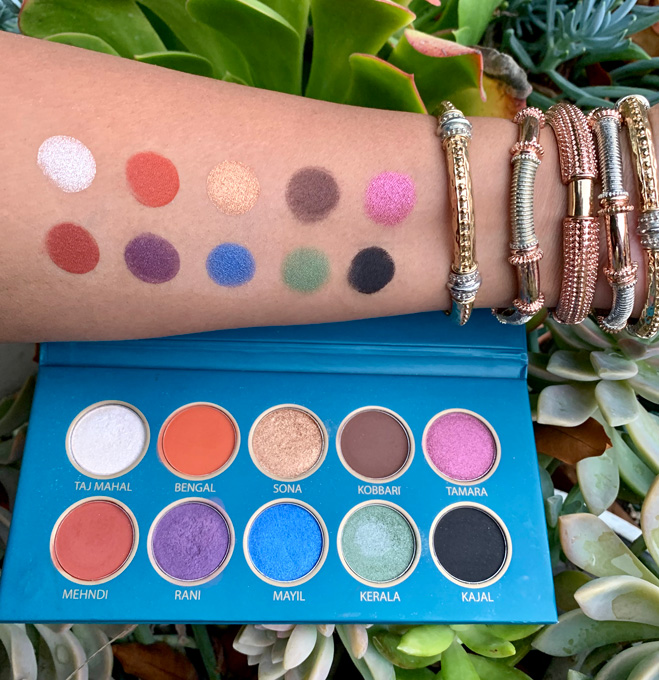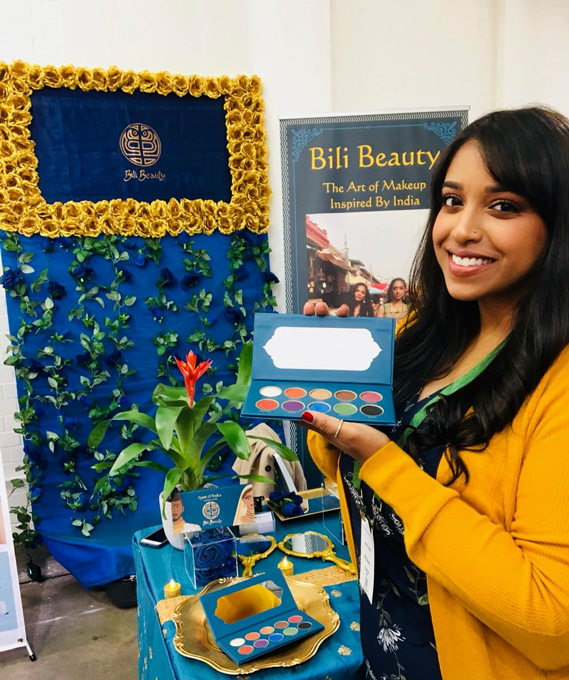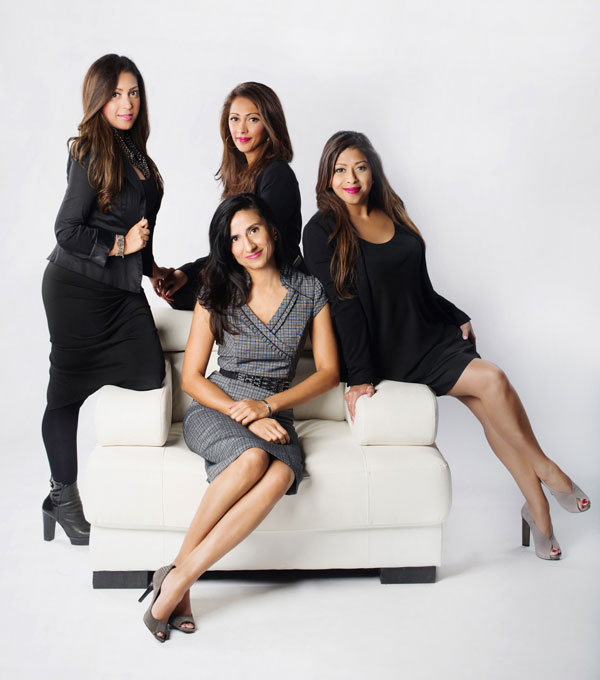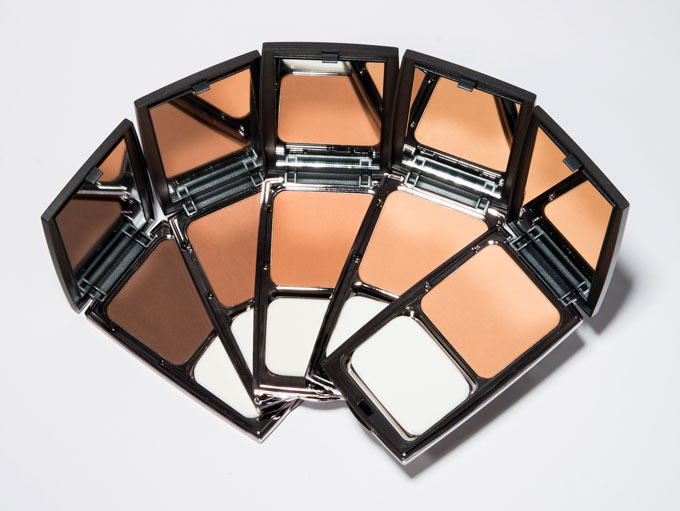Brown and Beautiful
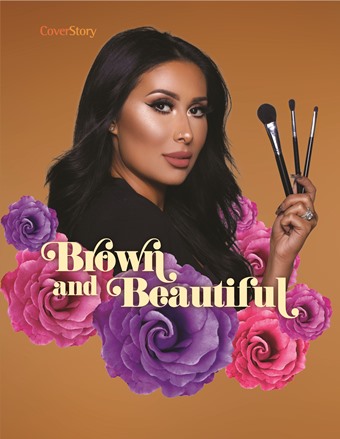
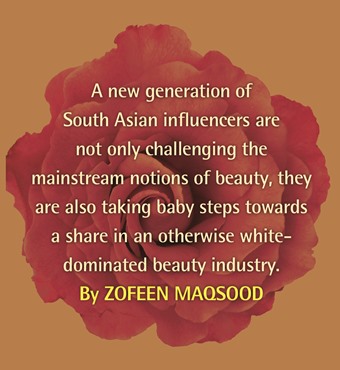
Long Beach (California)-based Sarah Thomas, a first generation Indian-American, has always been interested in makeup. Growing up, she remembers going through reams of beauty magazines, poring over models and marveling at their immaculate eye shadow and perfect pouts.
But what always puzzled her was that none of those pretty models had a dusky skin or dark hair like hers. She lamented not having a beauty icon the same shade of brown as the women in her family. She says, “I clearly remember being thrilled watching the movie Bend It Like Beckham as a school girl—not because I was interested in soccer, but because for the first time ever, I saw a brown girl (Parminder Nagra) on the screen as a lead.” And even though Thomas’ heroine hardly wore any makeup, an area she was particularly interested in, it was still a solace to find someone close to her skin tone being idolized by her white schoolmates.
Thomas adds, “As an immigrant growing up in America, it can be confusing to think that perhaps the Western idea of beauty does not include brown skin or products that cater to South Asian skin tones.” And it was this quest to find a diversity in makeup that led Thomas to launch Bili Beauty. The small beauty brand that originated in California in December last year is for now selling all-natural eye shadow palettes that come in delightfully Indian-named shades. There’s Mehendi, an almost celebratory vivid orange, Kerala, an intense jade-green, and Taj Mahal, a shimmery off-white hue. “The whole purpose of our brand is to bring attention to India’s beautifully diverse cultures through the art and science of makeup. We strive to educate others on the Indian culture and hope that people finally see themselves in a beauty brand.”
|
|
|
|
Bili Beauty’s first product launch, |
Sara Sophy Thomas of Bili Beauty, at the Indie Beauty Expo in London. |
Sarah Thomas is not the only one who is trying to celebrate her Indian roots and gently nudging the Western beauty industry to take note of an important demographic. A growing number of South Asian women are now gung ho about making their presence felt in the business of beauty—an area where Indians who have traditionally been inclined towards academics were wary of venturing.
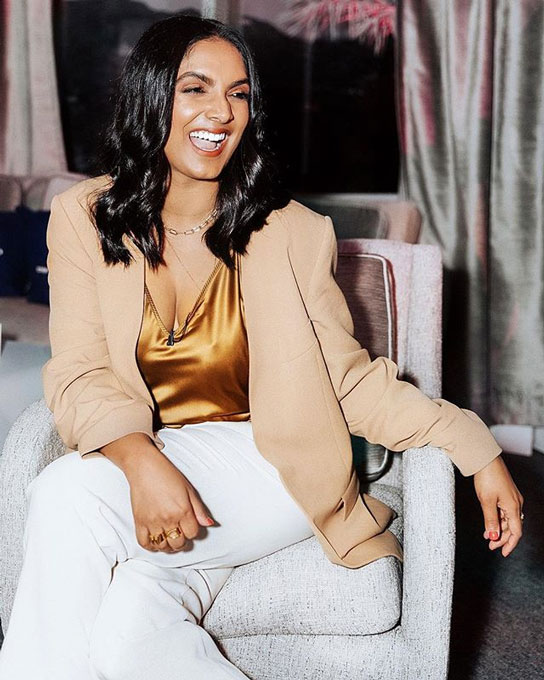
(Left) Deepica Mutyala broke the Internet with 10 million views on her home video showing how to cover dark circles. Since then Mutyala has consistently championed the cause of bringing more brown girls, in all their shades, into mainstream prominence.
In February of this year, mega beauty giant Clinique launched its influencer travel campaign featuring 50 of the most popular beauty influencers from around the world. The campaign included Deepica Mutyala, an L.A.- based, Indian-American beauty blogger who started as a YouTuber and is now a TV host and a stylemaker on the Today show on TV. After garnering millions of views from women across the world on her hair and makeup tutorials, Deepica’s rise to fame has in many ways been a symbolic leap of brown women breaking into the Caucasian-centered beauty industry. Her first break came as a surprise when Mutyala broke the Internet with 10 million views on her home video showing how to cover dark circles. Since then Mutyala has consistently championed the cause of bringing more brown girls, in all their shades, into mainstream prominence. Last year, Mutyala launched Tinted—a digital company, focused on representing the underrepresented brown skin tones in the beauty industry.
“There’s a whole spectrum of our skin tones that need representation and still don’t have it. We don’t want to be a diversity ‘check mark.’ It’s time we change the beauty standards to actually reflect all of us, not just one of us,” proclaims Deepica on her website.
|
|
|
|
Pinki Gosal (front) with sisters Priti and Gargi Patel, and friend, Mona Patel—the team of Vasanti Cosmetics, one of the pioneers of the South Asian beauty movement. |
Many of the Vasanti Cosmetics products specifically address the needs of brown skin. |
Canada-based Vasanti Cosmetics not only sells makeup meant to look good on brown skin tones but also has a range of serums and moisturizers that work well for any woman who wants a healthy skin. Vasanti cofounder Pinki Gosal, who has been one of the pioneers of the South Asian beauty movement, makes no bones about the need to bring our own beauty brands. She says, “About 20 years ago, my sisters and I saw the need for beauty products that performed on our skin. We were facing issues with ashiness (powders and foundations looked grey and chalky on our skin tone), and dark circles that couldn’t be covered no matter what we used. Experiencing this dissatisfaction first hand sparked curiosity and we became obsessed with finding out why nothing worked. There were many cosmetic brands out there, but the lack of high-performing products for our skin tone drove us to do something about it.”
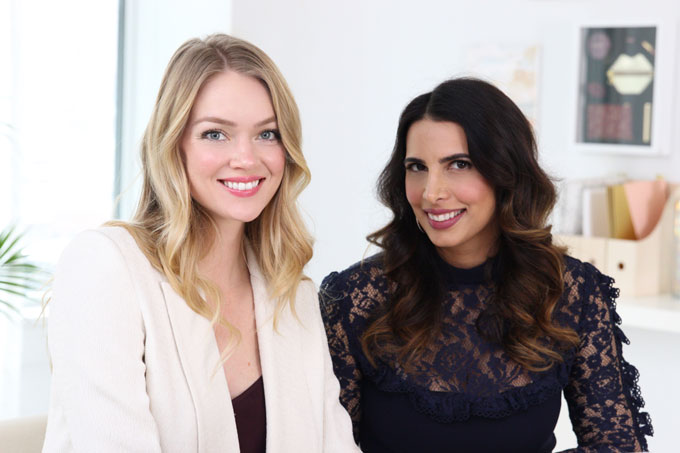
Divya Gugnani (right) and Lindsay Ellingson, founders of Wander Beauty. Gugnani is among the rising South Asian stars in the mainstream beauty industry.
Spurred by the inclusion debate, recent times have also seen an emergence of many impressive beauty brands helmed by South Asians, such as Wander Beauty by New York entrepreneur Divya Gugnani and Lady Burgundy by Indian-Canadian Amrita. Farsali by Sal Ali, created for Ali’s Indian-Canadian-African wife, retails at Sephora and has been one of the best-selling moisturizers at the beauty retail chain. Among some of the other names, Stellar Beauty by Monika Deol, also available at Sephora, has also been variously written about for its foundation for medium shades.
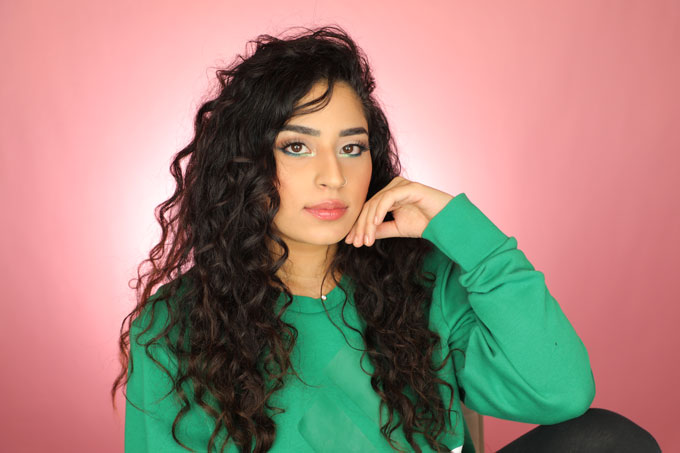
(Left) Manal Shaikh, cofounder of Eyeris, an eyelash line.
There is also a growing dominance of South Asian beauty bloggers who are in many ways disrupting the beauty industry as we knew it. So, if we have Toronto based Manal Shaikh who cofounded Eyeris (an eyelash line) giving us tutorials on the best shade of red for South Asian tones, we also have Nabela Noor, a Bangladeshi-American who was a keynote speaker at E.L.F. Cosmetics Beautyscape Influencer Program in New Orleans last year and sets new beauty ideals not just in terms of shades but also in size.
Better late than never
According to statistics, despite forming less than 1% of the U.S. population, Indians founded 8% of all American startups as early as by 2012. Interestingly, all of those startups were in the field of engineering and technology, thus giving more fodder to the nerdy Indian stereotype. But what remains to be questioned is—why did a community known for its entrepreneurial and risk-taking skills shy away from venturing
into beauty business? Even though the industry has
traditionally been female-dominated, and even though Indian-American women have been breaking ground for decades now, why is it that not many of them thought of setting up beauty businesses—an area that connect women across cultures and
continents? Perhaps the answer, as many entrepreneurs would say, lies in the South Asian culture of
emphasizing academics and ‘real’ professions. Mutyala, a Hollywood red carpet regular and one of the most prominent names amongst Indian-Americans to break the beauty ceiling, has explained how her Indian family expected her to follow the tradition of being a doctor, and how much grit and gumption it took for her to venture into this nontraditional route.
Pinki Gosal of Vasanti Cosmetics gives logistical reasons on why South Asians may have been slower in making forays into the beauty business. She says, “Unfortunately, the opportunity to launch beauty products wasn’t as apparent as it has become in the last 5-10 years, with digital platforms making it easier to reach diverse markets. This change has paved the way for more brands to cater to the needs of their diverse customers. Also, market share and immigrant population growth has become more apparent in recent years.” She adds, “The business of color cosmetics and skincare is a complicated one, and it’s not so easy to launch a startup. Now, with the demands being more apparent through social media, there is more opportunity for investment in this segment. It is a highly competitive business, and large corporates own the majority of the market share, which made it tough to enter and share this beauty space back then. Another important point is that developing true beauty solutions for diverse skin tones is also quite difficult. For us, to create some of our hero products, we spent years on testing and developing solutions.”
New Age small business owners agree that social media acted as a catalyst for them. Thomas of Bili Beauty says, “[For] Millions of Asian women, when they see bloggers and YouTubers like them wearing makeup and giving tips, suddenly the market looks more relatable. We are not only looking at what the big brands show us in terms of their chosen models. The world is now full of real women who are not shy to show what may or may not work for them.”
Manal Shaikh, one of the more popular beauty influencers in North America, who got her first break a few years ago when she was chosen as the guest speaker at Cosmoprof, North America—one of the most important beauty trade shows—thinks that the South Asian beauty market is poised to grow from here. She says, “I think we have come a long way in the beauty industry in terms of being more diverse with shade ranges in foundations, concealers, etc. I also have seen a large growth in South Asian influencers officially becoming YouTubers and content creators overall. I believe the industry will only continue to expand from here, and there will be more South Asians creating beauty lines as the digital platforms continue to grow. I actually believe there are plenty of popular brands started by South Asians that consumers may not be aware of.”
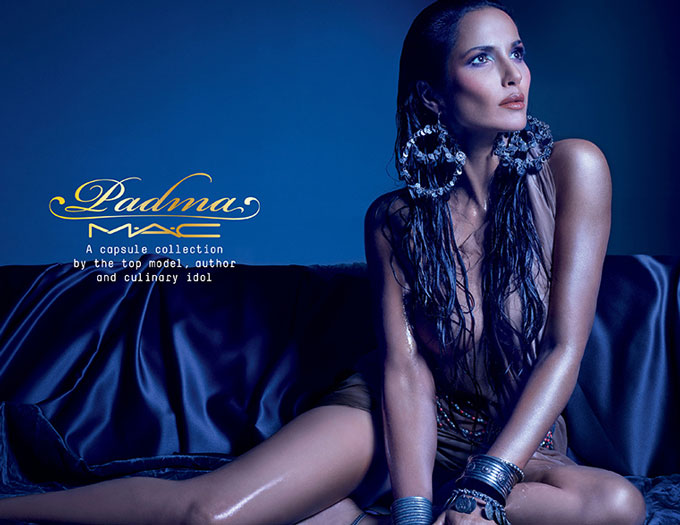
(Left) MAC Cosmetics’ limited-edition line with Indian-American model Padma Lakshmi.
Honoring the roots
Another delightful change that the new entrants to the beauty world are making is that they are not afraid to talk about their cultures and complexes. Also, what may have encouraged a lot of smaller beauty brands is cosmetic giants giving a gentle nod to cultures. Last year, MAC Cosmetics did a limited-edition line with Indian-American model Padma Lakshmi. The collection was a boisterous celebration of Padma’s Indian roots, and the author herself said that as a dusky woman she kept in mind the challenges that women like her face in selecting makeup that does not speak to them. The shades were also perfectly named as Kerala Sun, Mittai Pink, Mumtaz, and Cardamom. Sal Ali of Farsali Cosmetics has admitted that, growing up as a South Asian, coconut oil was a staple in his household, and that in many of his beauty experiments he brought along the traditional favorite ingredients such as rose to concoct his most winning products.
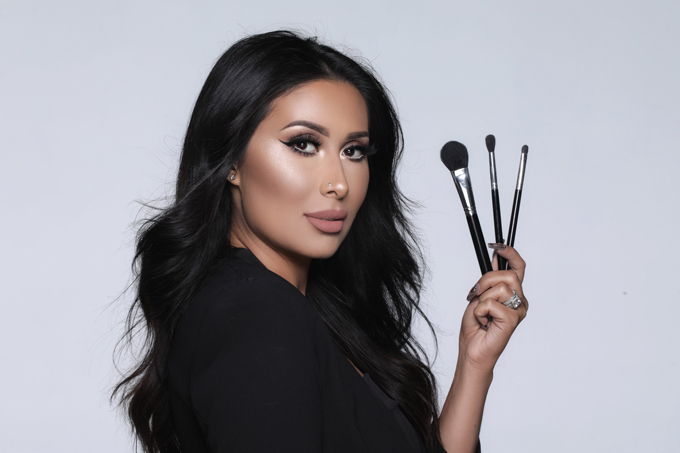
(Left) Tamanna Roashan is a global beauty educator with 2.5 million-and-growing followers.
YouTube star Tamanna Roashan is a global beauty educator with 2.5 million-and-growing followers. Her beauty empire Dress Your Face has a great following amongst Hollywood celebrities, and she recently collaborated with Anastasia Beverly Hills to bring out a limited edition “Tamanna Palette," which emerged as a breakout star. The success prompted her to branch out into more products such as lashes, hair tools, etc. but her best seller remains her henna tattoos, which are an affirmation of her Indian roots. Tamanna realizes that the beauty industry can be very competitive to break into but is happy to list her achievements and believes every woman can do this. She says, “I have worked on the red carpet and after parties for award shows such as the Grammys, Golden Globes, and the ESPYs, and I have been an honorary judge for the Miss India USA and Miss India Globe pageant in L.A.” But amongst her biggest achievements, she thinks, is the fact that she showed the way to many South Asian women that they, too, can break into the mainstream. She says, “I was the first ever social media influencer and makeup artist to ever collaborate on a product with a major cosmetic company (Anastasia Beverly Hills), which paved the way for all future collaborations between Instagram influencers and beauty brands around the world.”
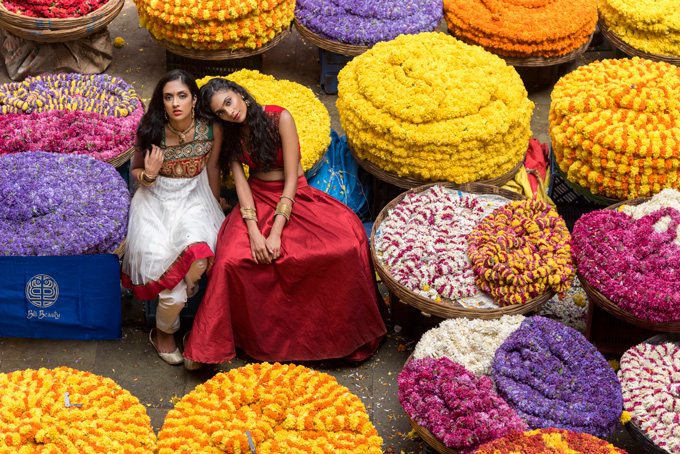
Models Subiksha Shivakumar and Meghana Ramakrishnan posing for Bili Beauty’s marketing campaign in Bangalore, India. (Photo: Ritika Khandelwal)
Thomas says that she made it a point to shoot her campaign pictures in Kerala, India, the state her parents come from. She says, “It is an ode to my roots, but also it stresses how diverse and beautiful Indian tones are. I want to bring in that beauty in its original, unadulterated format.”
Amrita, CEO and founder of Lady Burgundy, says, “As a Canadian woman of Indian ethnicity, I struggled to find a great nude lipstick or see a model that looked like me. I never saw much representation at that time and I wanted to change all of that, but actually starting something terrified me.” Amrita did overcome her fears and her line reflects her inclusive philosophy with matte lip colors named Rekha, Priya, and Noor amongst shades called Olivia and Madison.
Makeup activism anyone?
Believe it or not, makeup has historically served as a tool for activism and making political statements. Back in the World War II era, women took to looking glamorous and using makeup to put up a brave front. As the world, and particularly America, continues to see divisive politics, many brave South Asian women are using makeup as a tool to make their voices heard and be counted. In 2015, Deepica Mutyala launched a #beyourprincess campaign on Halloween where she dressed up as Ariel, Cinderella, and Jasmine. The blogger wanted to defy the notion that she could only dress as Jasmine, the Disney princess with a skin tone closest to her own. The message was that regardless of skin tone, every girl can be what she wants to be.
Nabela Noor, with her immensely popular Instagram handle which has 1.1 million followers and growing, continues to show and speak about realistic sizes. She has often said that the average size of an American woman is 12 or 16 and not 2 or 4 as seen in campaigns. The role that many such women may have played has snowballed into a global movement. In 2017, when Rihanna and her brand Fenty Beauty announced 40 shades to match most skin tones, the move was welcomed by the growing South Asian influencer community.
The effects of this new visibility are here to see. Sarah Thomas who recently participated in the Indie Beauty Expo held in Los Angeles in January informs, “Even though the majority of participants are still Caucasians, until a few years ago people would assume that an Asian or Indian selling makeup would cater only to their demographic. Today, I am happy to see that when I participate in expos such as these, so many white skinned women come to us to know more on how they can use these bright colors, and this goes to show that our mission of inclusivity is on a right way.”
Even though, statistically, the share of South Asian beauty brands remains just a whimper in the multimillion dollar beauty industry, the good news according to proponents of the South Asian beauty revolution is that a start has been made. Pinki Gosal of Vasanti Cosmetics that enjoys a respectable place in beauty circles is hopeful of the trend and thinks that the South Asian share of the beauty pie has the potential to grow. She says, “The future of South Asian beauty is looking bright, because it will be full of choice and true solutions that work and combat real beauty concerns for this market.”
And as she sums it up, “It’s great that there are models and influencers in the mainstream world of social media that are giving South Asians a stronger voice, along with the power to demand more choices. I am so hopeful that this industry will offer innovative, new beauty products and solutions catered specifically for this underserved market. We are certainly moving towards more inclusivity in the beauty industry.”
Zofeen Maqsood is a U.S.-based journalist who writes extensively on millennial trends and expat issues. She has contributed to the some of the biggest newspapers and websites in India and in the U.S.
Enjoyed reading Khabar magazine? Subscribe to Khabar and get a full digital copy of this Indian-American community magazine.
blog comments powered by Disqus




